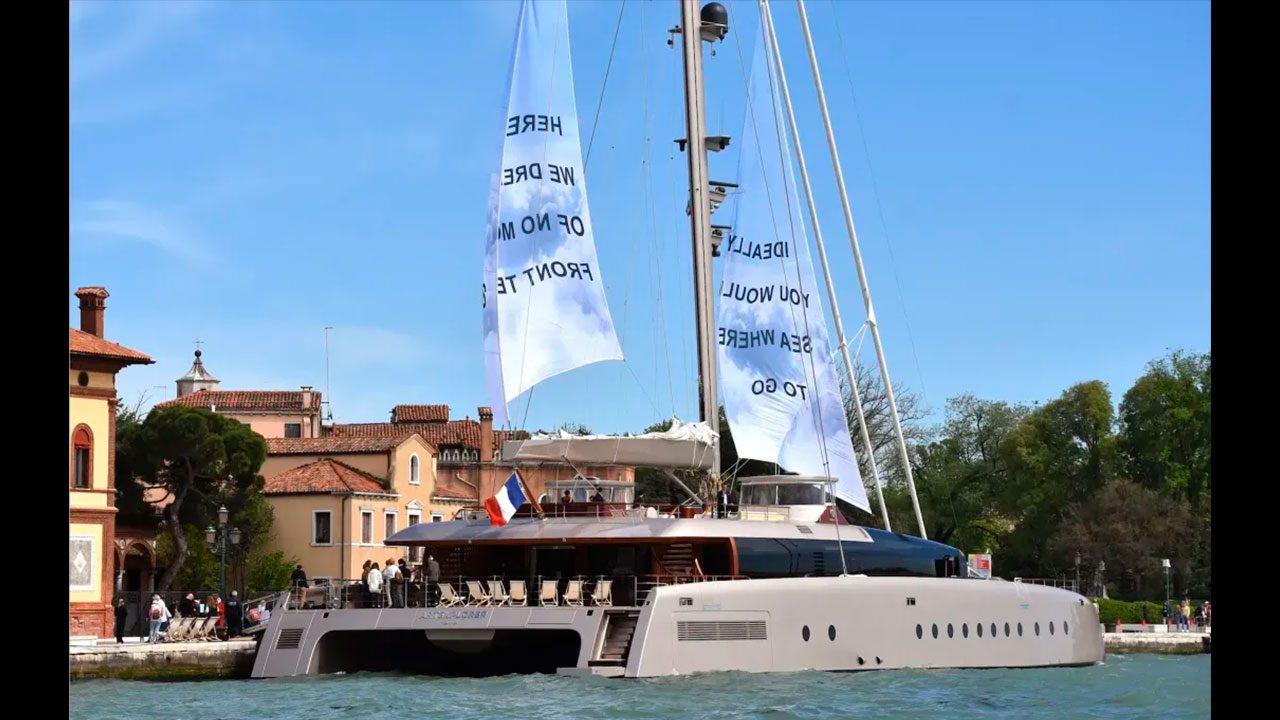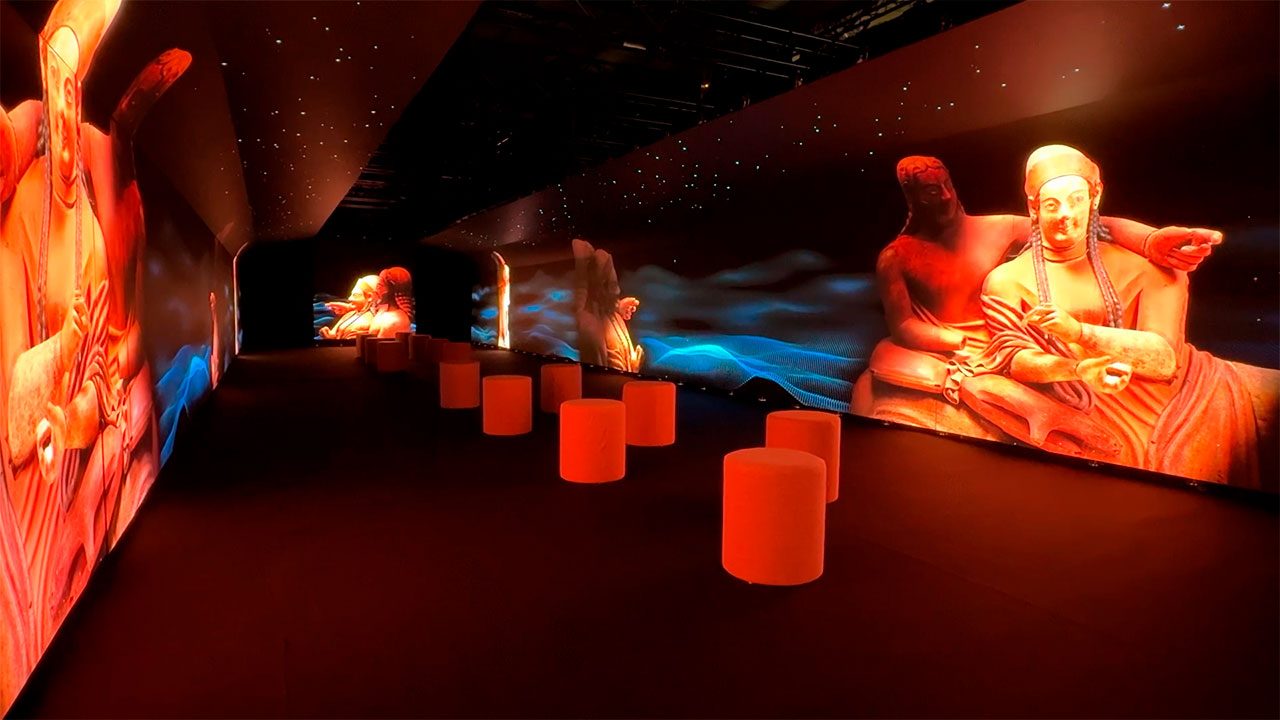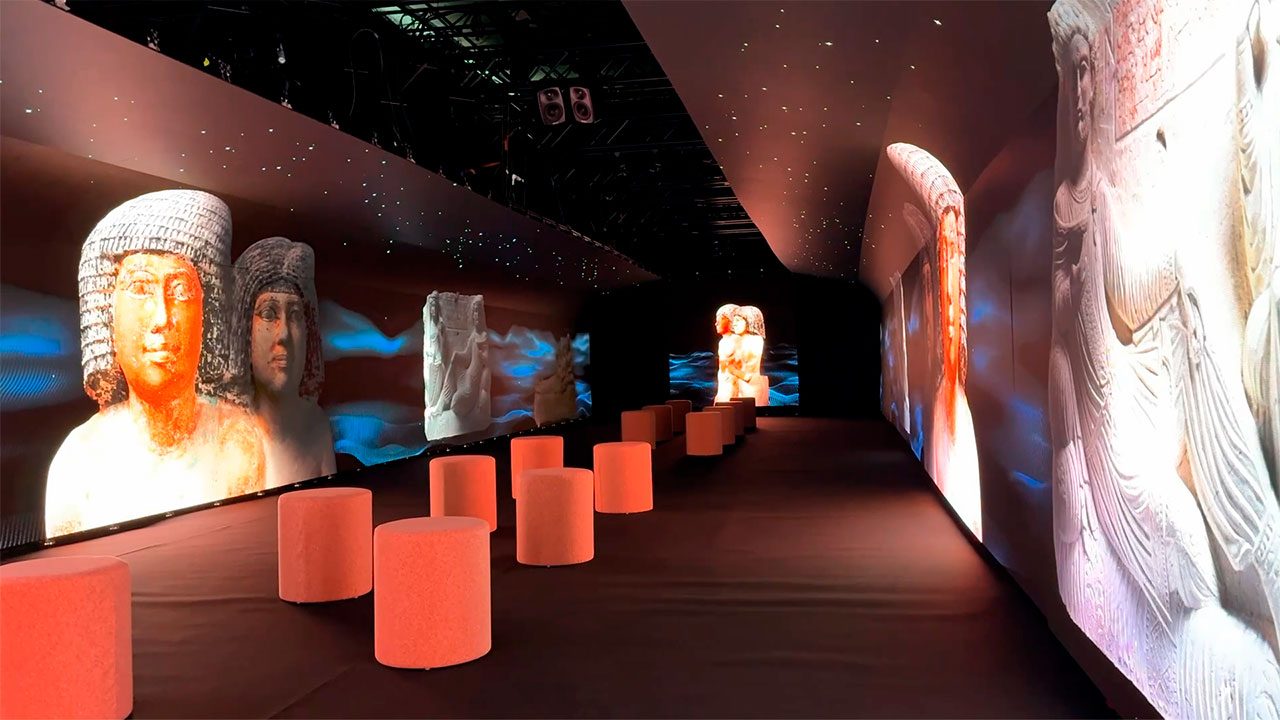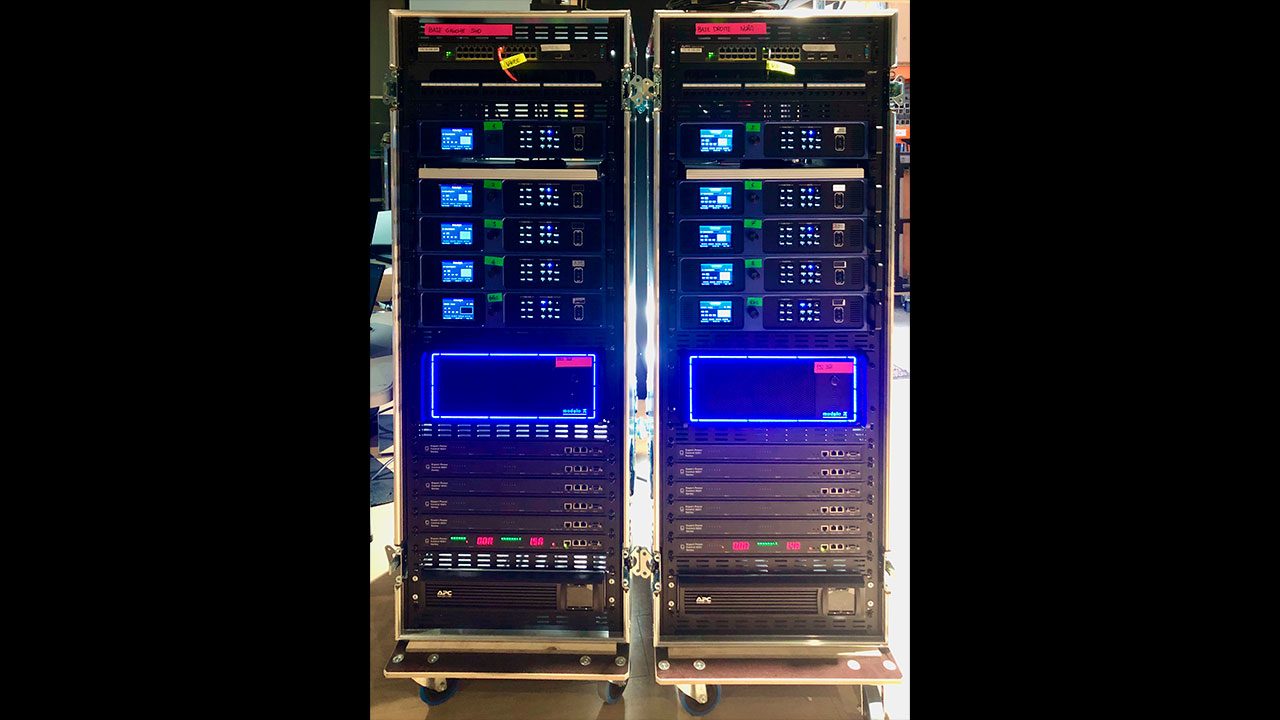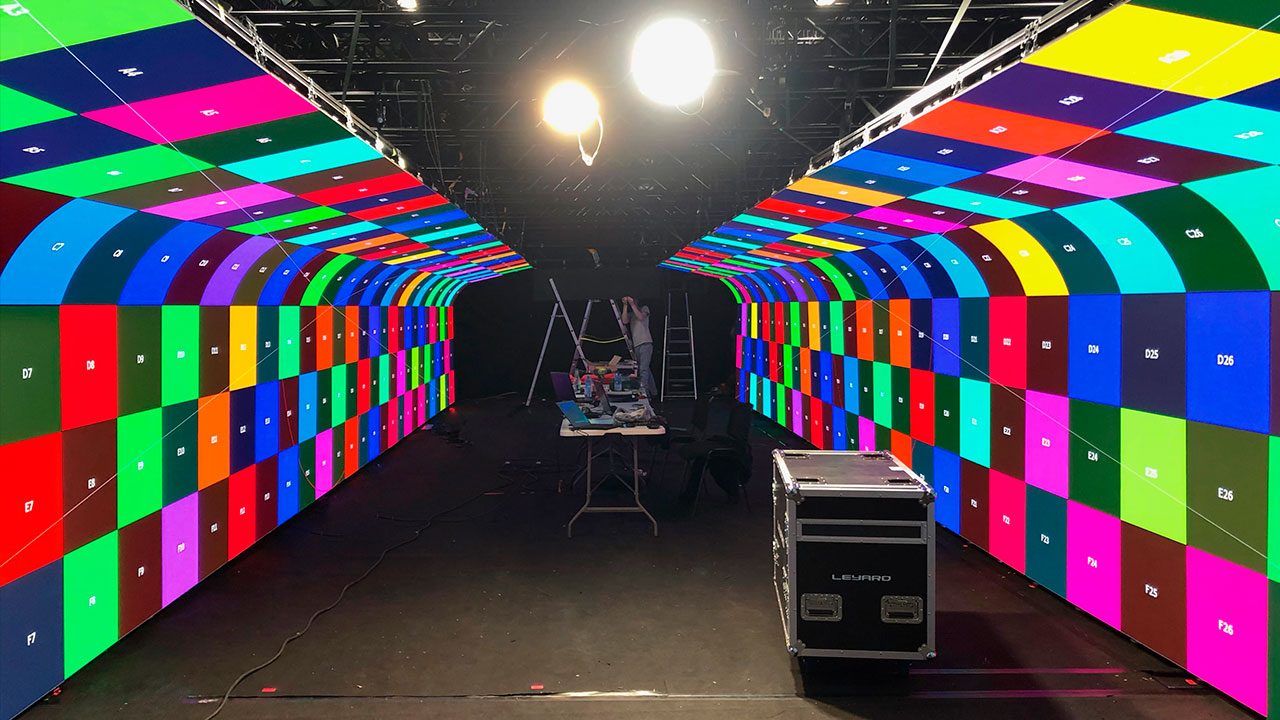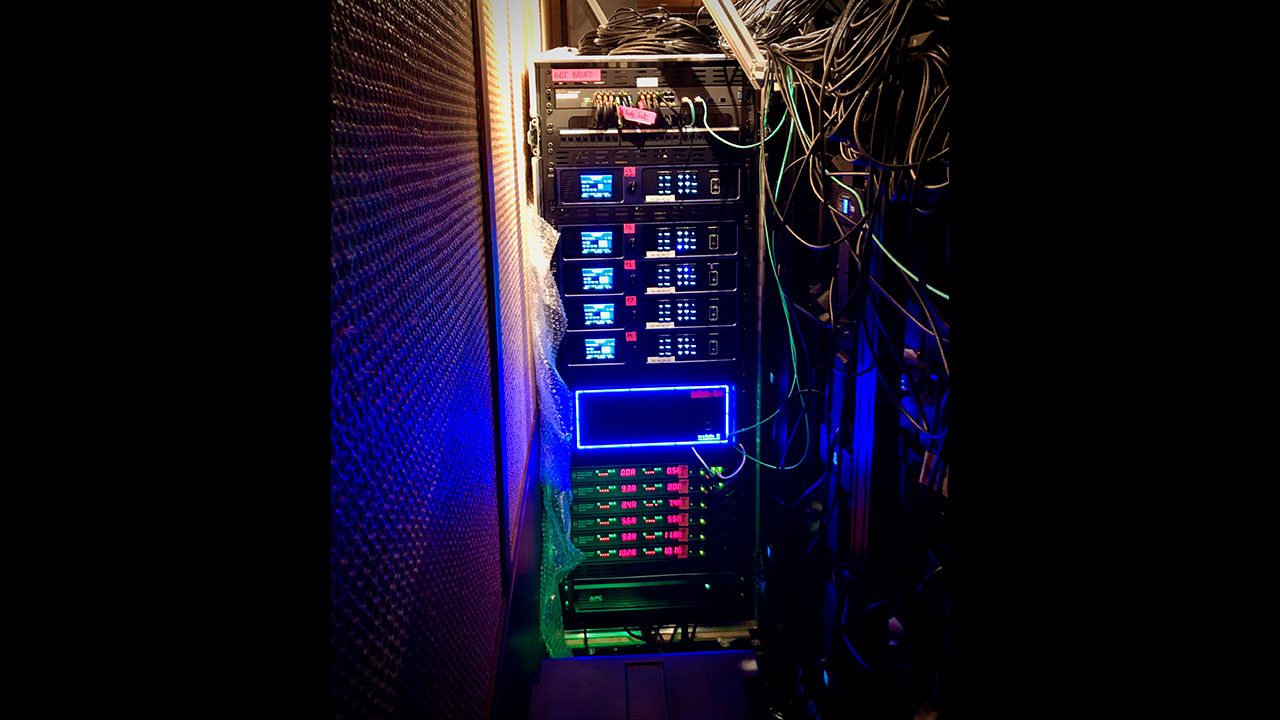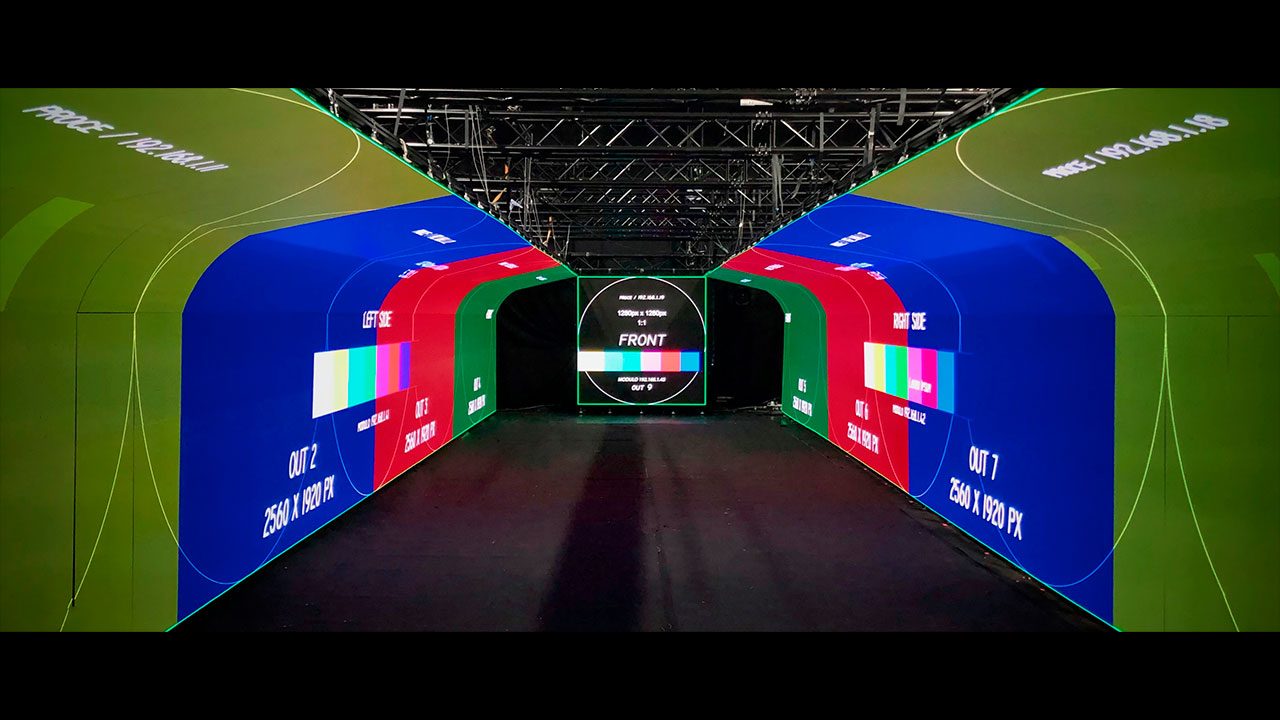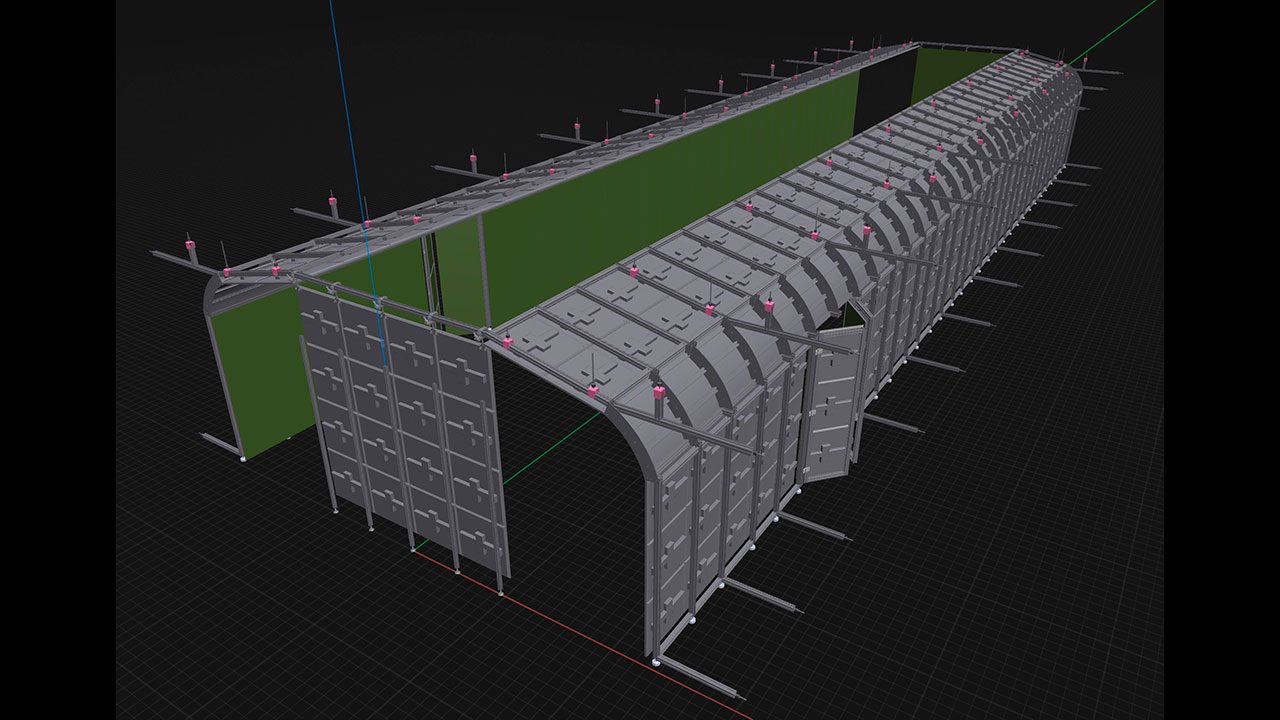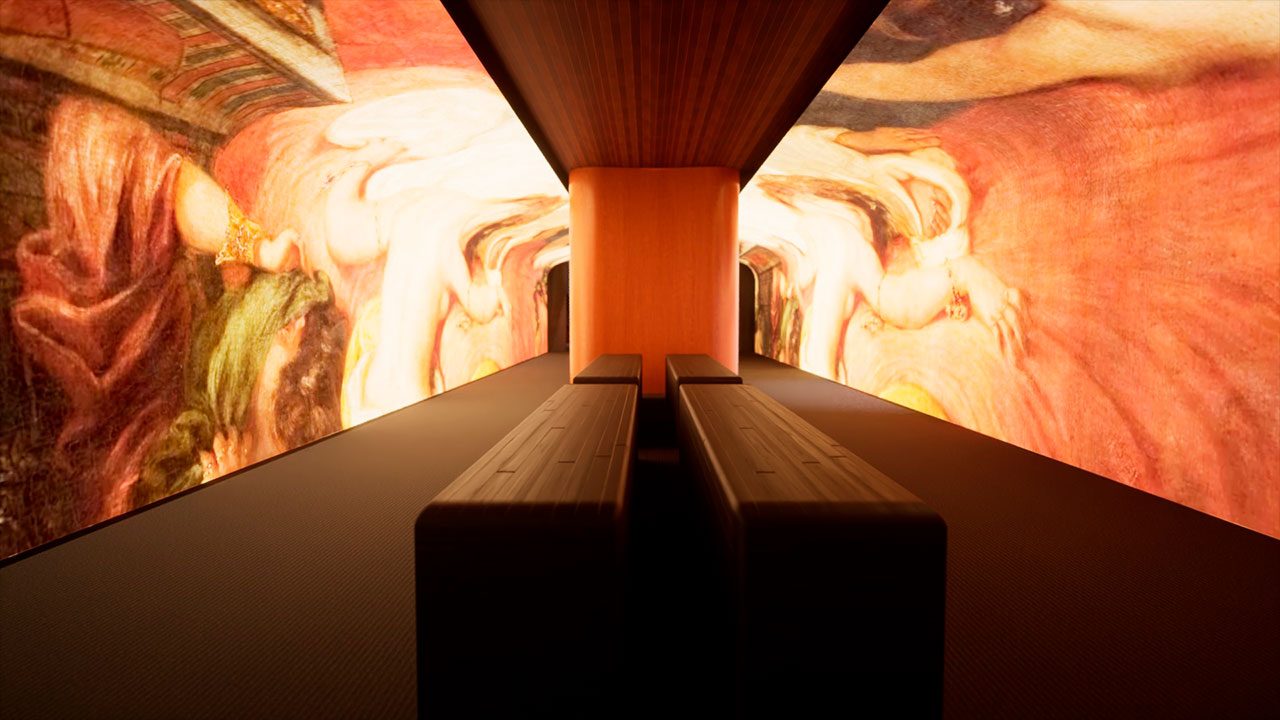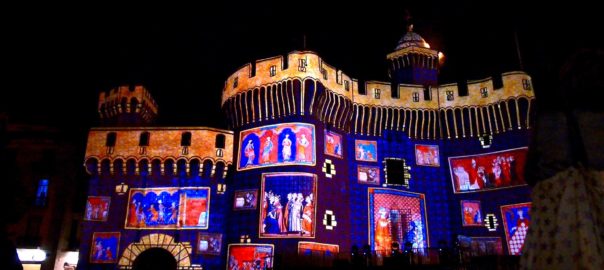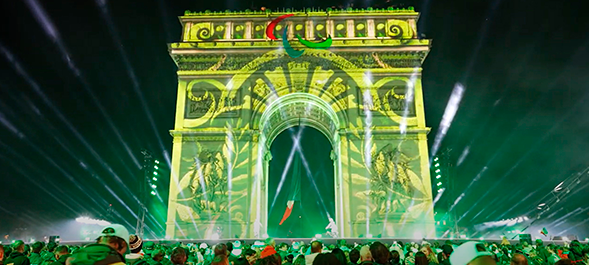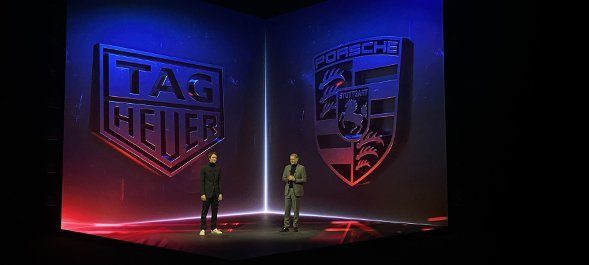Consulting & integration: Akumendo, Arscénique
Audio show: Ircam
Présentes exhibition: Graphics eMotion, Louvre
Recharger exhibition: Oasis Immersion
Modulo Kinetic equips ARTEXPLORER, the world’s first museum boat
In spring 2024, the Art Explora Foundation launched its travelling festival across seas and oceans with ARTEXPLORER, the world’s first museum boat. Akumendo and Arscénique joined forces for this unique and ambitious project. A state-of-the-art audiovisual system was designed and integrated into the catamaran, with an immersive LED tunnel and the Modulo Kinetic media server from Modulo Pi.
Created by French entrepreneur and philanthropist Frédéric Jousset, the Art Explora Foundation aims to make art and culture accessible to the widest possible audience by placing mobility and digital technology at the heart of its activities.
After its two mobile museums installed aboard trucks to travel the roads of France and England, the foundation’s latest project is the travelling Art Explora Festival and its catamaran named ARTEXPLORER.
Designed to provide free access to unique cultural and artistic experiences, the festival will take place on board the boat, as well as on the docks of the host cities.
From spring 2024 to fall 2026, the Art Explora Festival and its museum boat plan to visit fifteen countries across the Mediterranean Sea.
Initiated 4 years ago, ARTEXPLORER is the first museum boat in the world. Designed by architects Axel de Beaufort and Guillaume Verdier, the 47m long catamaran and its imposing 55m sails were built at the Perini Navi shipyard in Italy.
Akumendo, specialist in IT integration on board yachts, and Arscénique, audiovisual service provider, joined forces to develop a joint response to an unprecedented set of specifications.
One of the main challenges of the project was to set up an immersive space to host digital exhibitions for around forty people on the boat’s main deck. The system also had to be able to be dismantled so that ARTEXPLORER could be used as a cruise ship outside festival periods.
Guy Butterati, co-founder of Akumendo, explains: ‘In the specifications for the museum section, the idea was to create a large immersive room inside the main deck, approximately 19m long by 6m wide. The first designs included video projectors, but we rapidly realized that it was going to be complicated.’
Emmanuel Ducros, Chairman of Arscénique, adds: ‘We have very little ceiling height, so even with ultra-short throw models, around thirty video-projectors would have been required in an small space, with up to 40 people living the experience causing cast shadows.’
Faced with the difficulty of installing a projection system on board the catamaran, Akumendo and Arscénique turned to LED technology and the manufacturer Leyard to design a custom LED structure. ‘This wasn’t the client’s initial request, but in addition to the video projection study, we carried out a study using a LED tunnel’ explains Emmanuel Ducros.
The LED proposal put forward by Akumendo and Arscénique was eventually chosen to equip the museum boat.
The visit experience unfolds in 3 stages. Visitors enter the ARTEXPLORER’s upper deck, where they are equipped with RSF Confident headphones with binaural audio. For around ten minutes, visitors experience a sound odyssey around the Mediterranean Sea designed by Ircam, the French institute for musical and acoustic research and coordination. The tour continues on the aft deck, where a documentary is shown on a 3 x 2m LED wall. Finally, the public enters the heart of the main deck and accesses the immersive gallery. There, they experience the digital exhibition ‘Présentes’, designed with the exceptional collaboration of the Louvre Museum and created by Julien Abril and his team of Graphics eMotion.
An immersive LED tunnel has been installed in the main gallery. The tailor-made and removable structure is the fruit of close collaboration between Akumendo, Arscénique and Leyard. ‘We had to combine the constraints of the sailing environment with those of an event-type system. The system was designed as if for a tour’ says Guy Butterati.
The immersive tunnel is made up of 2 walls measuring 16m long and 3m high. The curved LED modules rise up to the imposing mast base. The installation is completed by two 2 x 2m LED walls positioned at the entrance and exit of the tunnel. The gallery can accommodate around forty visitors. With the public positioned around 1.80m from the screens, all the LED elements have a pitch of 1.5 to ensure the best possible visual experience.
To power the 50 million pixels of the LED tunnel, Akumendo and Arscénique used Modulo Pi‘s Modulo Kinetic media server. The kit consists of a Modulo Kinetic Designer workstation, and 3 x Modulo Kinetic V-Node servers equipped with 4 x 4K outputs and 4 TB of storage.
The servers are used to play the 12-minute show in 60 FPS designed for the LED tunnel, as well as the documentary shown on the boat’s aft deck.
Modulo Kinetic also drives the 8 x Genelec multi-channel speakers distributed throughout the immersive room. One of the V-Node servers has been equipped with a Dante virtual sound card to communicate with the networked speakers, thereby reducing the amount of cabling on board the boat.
Modulo Pi‘s media server show control functions were also used. The UI Designer embedded in Modulo Kinetic made it possible to create custom panels to control the launch of the video shows, and send the top for the audio show played through the binaural headphones.
In addition, a maintenance panel has been specially designed to provide feedback from the audiovisual system in real time.
Thanks to the Kinetic Panel companion app, the control panels created in the media server can be accessed from a tablet. Guy Butterati refers to a specific panel for daily operations: ‘Technical information such as temperature or electricity consumption are available in the form of a dashboard for the Operations Manager, who can access it from his own iPad.’
Apart from the Art Explora Festival, the immersive LED tunnel can be operated in an enlarged version on land, freed from the volume constraints of the catamaran. ‘We studied another self-supporting truss structure to accommodate the tunnel installation’ explains Emmanuel Ducros. ‘We proposed raising the whole structure with an additional line of LEDs to enlarge the space.’
The event version of the LED tunnel is still 16m long, but 1m wider, and 50cm higher.
The terrestrial version of the tunnel and the racks containing the Modulo Kinetic media servers were installed in Hangar Y, Europe’s first airship hangar and a UNESCO World Heritage Site, located near Paris. Now transformed into a cultural center, the Hangar Y hosted the ‘Recharger’ exhibition in collaboration with Studio Oasis Immersion from Canada.
From December 16 to February 11, visitors were able to dive into the immersive LED tunnel and discover 5 visual and sound artworks created by international artists.
Following this first appearance of the immersive LED installation piloted by Modulo Kinetic, the system had to be integrated into ARTEXPLORER in preparation for the first stopover of the museum boat scheduled in Malta from March 21 to 31, 2024.
The Akumendo and Arscénique teams had 12 days to complete this first installation on the catamaran.
As the electronics had already been validated during pre-assembly and then during the exhibition at Hangar Y, the set-up time was mainly used to deal with the constraints of the boat. ‘We had to make everything black, work with the boat’s electrical distribution and manage the power sequencing of the LEDs’ explains Guy Butterati.
The racks containing the Modulo Kinetic servers were positioned on the port and starboard sides of the immersive installation to fit in with the limited space available.
Commenting on Modulo Kinetic, Guy Butterati says: ‘The system has proven two things to us: It’s very open, very versatile, and also very reliable in its operating phase.’
Currently used for media playback and show control, the system could evolve towards more advanced applications using Modulo Kinetic‘s interactive features. ‘Art Explora is a far-sighted foundation. We didn’t want a simple player. With Modulo Kinetic, we know that we’re future-proof and that we’ll be able to respond to every possible situation in the future’ concludes Guy Butterati.
The launch of the Art Explora Festival in Malta was a great success, with 18,000 people visiting the museum boat and its exhibitions.
After a stopover in Venice from April 17 to 22 for the Biennale, the next port of call for the travelling festival will be Marseille, from June 6 to 18. At the dock, an artistic village – designed by the renowned Wilmotte architecture firm – will be offering activities and lectures on art. The ARTEXPLORER museum boat and its immersive tour will be open to the public in the heart of the Old Port.

